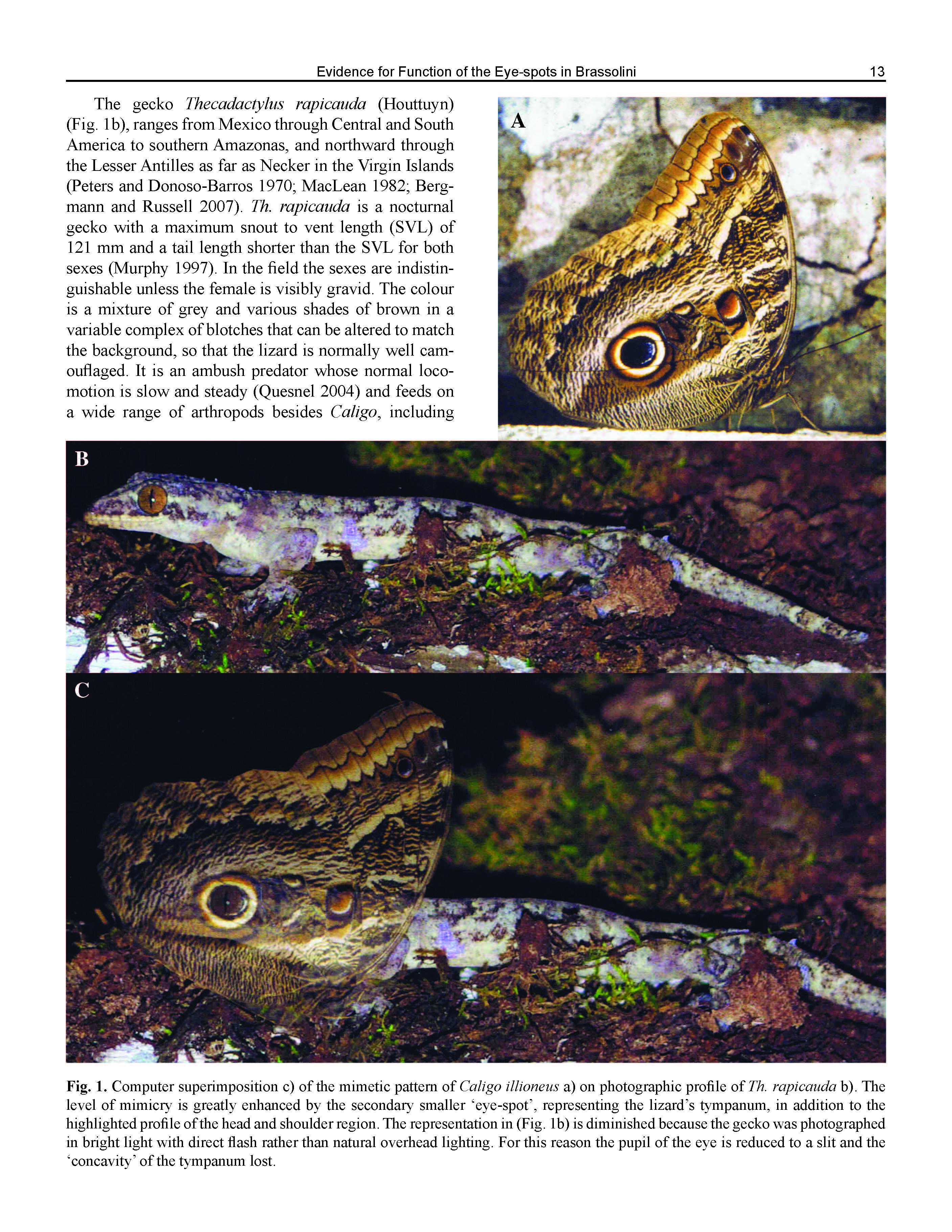Evidence for the Function of the Eye-spots in the Butterfly Genera Caligo and Eryphanis (Lepidoptera: Nymphalidae: Morphinae: Brassolini)
Keywords:
mimicry, deflection hypothesis, geckonids, ThecadactylusAbstract
Direct observations of seven predatory attacks by the geckonid Thecadactylus rapicauda on butterflies of the genera Caligo and Eryphanis are reported. Two hundred and nine individuals of these butterflies were examined and the prob- able causes of wing damage classified. Of those examined, 57% showed wing damage of which 60% was consistent with attack by Th. rapicauda. The data support the deflection hypothesis; that these butterflies benefit from the “mimetic false head” through disoriented attack. Additional damage was observed suggesting attack by a larger predator. The behaviour of the predator towards the “mimic” is discussed. We propose that the eye-spots on these butterflies benefit the bearers through intrusion into the behavioural interactions between arboreal lizards. The possible mimicry of other saurian models by the genus Caligo is discussed.

